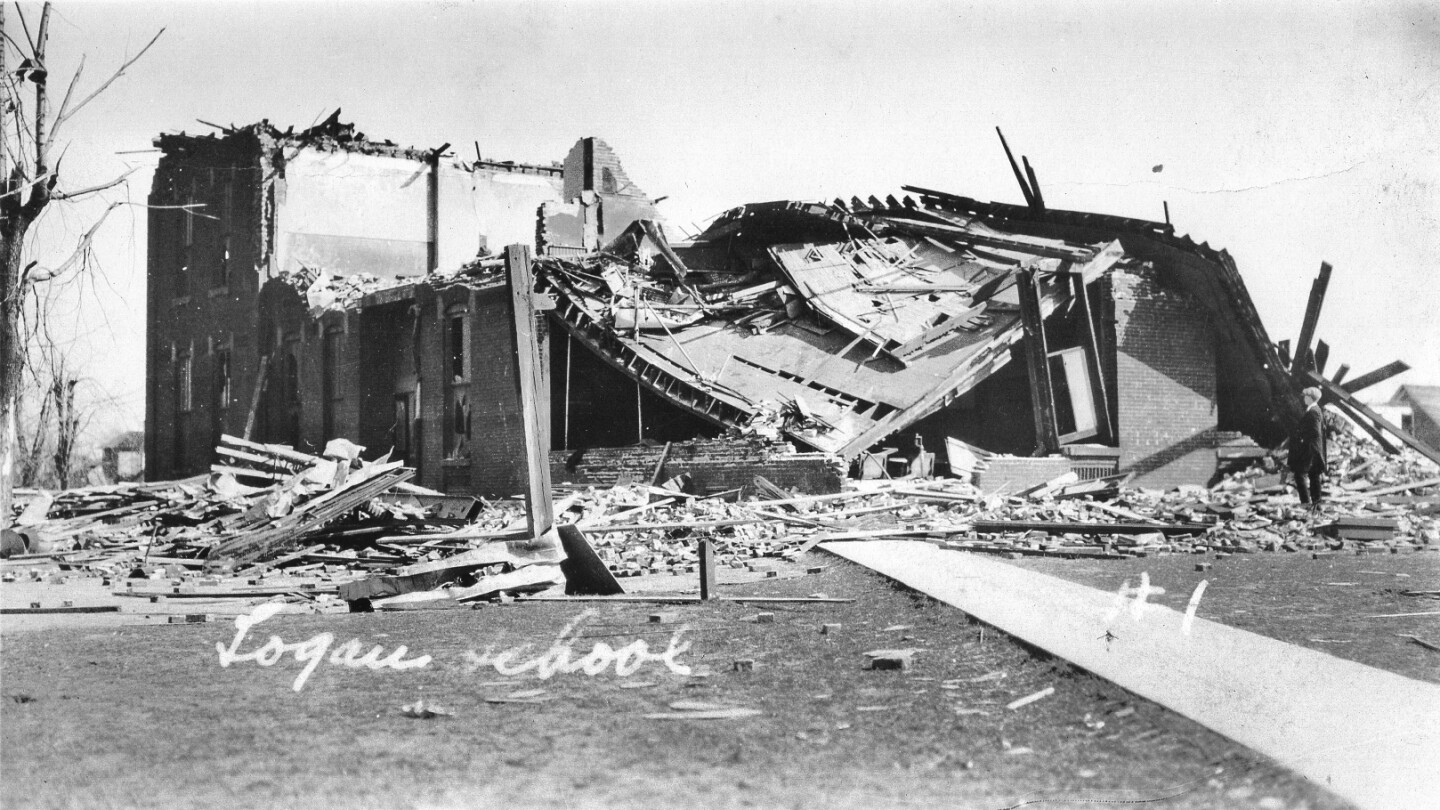A Century Later: Revisiting the Deadliest Tornado in U.S. History
On March 18, 1925, a catastrophic event unfolded across the Midwest that would forever alter the landscape of American natural disasters. The Tri-State Tornado, as it came to be known, carved a path of destruction through Missouri, Illinois, and Indiana, claiming an estimated 695 lives and injuring more than 2,000 individuals. As we reach the centennial anniversary of this deadly tornado, it’s crucial to revisit the events of that fateful day, the tremendous impact it had on affected communities, and the lessons learned that continue to resonate today.
The Day the Sky Turned Black
The Tri-State Tornado struck during a time when meteorological science was still in its infancy. On that fateful afternoon, residents in the path of the tornado were taken by surprise. Unlike today, when advanced warning systems and Doppler radar provide real-time updates about severe weather, people in 1925 had little to no warning. The tornado formed in the early afternoon, and within an hour, it had transformed entire towns into rubble.
Starting in southeastern Missouri, the tornado traveled an astounding 219 miles, making it the longest tornado track recorded in U.S. history. As it moved into Illinois, towns like Murphysboro and De Soto bore the brunt of its fury. The tornado then crossed into Indiana before dissipating, leaving behind a trail of destruction that would take years for communities to recover from.
The Aftermath: A Community in Mourning
The immediate aftermath of the Tri-State Tornado was devastating. Entire neighborhoods were flattened, and the death toll was staggering. In Murphysboro, for instance, nearly a third of the town’s population was killed, and countless homes were destroyed. Survivors faced the painful task of not only mourning their loved ones but also rebuilding their lives from scratch.
- Murphysboro, Illinois: The hardest-hit area, with 234 fatalities.
- De Soto, Illinois: Around 100 lives lost, with significant property damage.
- Gibson, Indiana: Suffered severe destruction and casualties.
In addition to the loss of life, the tornado caused an estimated $16.5 million in damages, a staggering sum at the time. Local economies were shattered, and many families found themselves without homes or livelihoods. The scars left by the disaster ran deep, marking not just the physical landscape but the emotional fabric of the communities affected.
The Legacy of the Tri-State Tornado
As we reflect on the Tri-State Tornado, it’s essential to acknowledge its enduring legacy. The event catalyzed significant advancements in meteorology and disaster preparedness. In the years following the tornado, the United States began to prioritize the development of warning systems. The establishment of the National Weather Service in 1970 can be traced back to the awareness raised by disasters like the Tri-State Tornado.
Moreover, the tornado highlighted the need for improved building codes and community planning. Many towns in the affected areas adopted stricter regulations to ensure that structures could withstand future storms. Schools and community centers began to incorporate storm shelters, recognizing the vital importance of preparedness in saving lives.
Modern-Day Tornado Preparedness
Fast forward to today, and the tools we have at our disposal for tornado prediction and response are remarkable compared to what was available in 1925. Meteorologists now utilize advanced satellite technology, Doppler radar, and computer modeling to provide accurate forecasts and real-time alerts. In the age of smartphones, weather apps and emergency alerts can reach individuals within seconds, potentially saving countless lives.
Despite these advancements, the threat of tornadoes remains ever-present. The Midwest, often referred to as “Tornado Alley,” continues to experience severe weather events. Communities are urged to maintain vigilance, especially during peak tornado season, which typically spans from March to June.
Survivor Stories and Community Resilience
One of the most poignant aspects of the Tri-State Tornado is the stories of survival and resilience that emerged from the disaster. Survivors recounted harrowing tales of narrowly escaping the storm’s path, while others described the heroic acts of neighbors who banded together to help those in need.
In the years that followed, many survivors became advocates for disaster preparedness, sharing their experiences to educate others. Their stories serve as a powerful reminder of the importance of community support and resilience in the face of adversity.
Honoring the Past: Memorials and Remembrances
As we commemorate the centennial of the Tri-State Tornado, various events and memorials are being organized across the affected states. These gatherings aim to honor the victims and celebrate the resilience of the communities that were forever changed. Memorials have been established in several towns, ensuring that the memory of those lost is preserved for future generations.
Reflection and Future Preparedness
While we cannot change the past, we can learn from it. The Tri-State Tornado serves as a reminder of nature’s unpredictability and the importance of preparedness. Communities must continue to invest in education, technology, and infrastructure to minimize the impact of future tornadoes. Engaging in community drills, promoting awareness campaigns, and ensuring that families have emergency plans in place can make a substantial difference in saving lives.
As we look back on this tragic event a century later, we must honor the memory of those who lost their lives and recognize the resilience of the communities that rebuilt from the ashes. The legacy of the Tri-State Tornado is not just one of destruction but also one of hope, unity, and the human spirit’s ability to overcome even the most daunting challenges.
In conclusion, the Tri-State Tornado remains a pivotal moment in American history. Its impact resonates not only through the stories of those who lived through it but also through the ongoing advancements in meteorology and community preparedness. As we move forward, let us carry the lessons of the past into a future where we are better equipped to face nature’s fury.
See more Your Daily Weather



